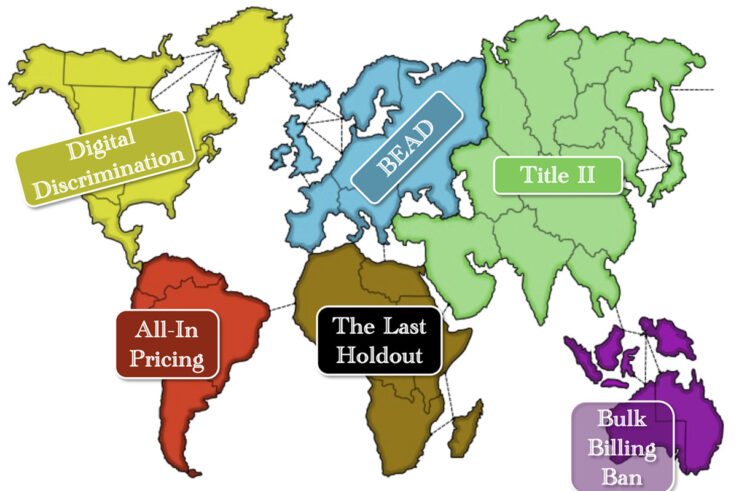This article is a part of the Section 2 Symposium symposium.
As evidenced by this on-line symposium, the handling of cases under the rubrics “monopolization,” “single firm conduct”, or “abuse of dominance” continues to be debated by the competition policy community. This debate, as evidenced by the Antitrust Division’s Sept. 2008 single firm conduct report and the FTC responses, is not restricted within the U.S. The European Union has published “Guidance Papers” on standards for exclusionary conduct under Article 82, and the Canadian Competition Bureau recently issued draft guidelines for prosecuting conduct under the abuse of dominance provisions of Sec. 79 of its Competition Act.
Almost any significant antitrust case will engender controversy over the facts, e.g., damages resulting from cartel conduct or market definition for mergers. The controversy over single firm conduct runs deeper. Much of this contention arises because the direct focus of the conduct, harm to rivals, is also the byproduct of vigorous competition. Despite everyone having learned to utter the mantra “protect competition, not competitors,” we find a line drawn between two sides. To caricature the bifurcation only slightly, one side, which I’ll call the skeptics, would set the burden of proof very high, with harms to competitors presumptively competitive. The other, here called the activists finds enforcement lax, is more willing to protect competition by protecting competitors.
I propose to resolve the controversy by positing that both sides are right-but within separate categories of monopolization cases.
One category includes cases where the alleged harm to competition arises because of a present monopolist acting “too competitively,” doing too much to attract consumers now so as to create and exploit a strategic advantage allowing it to maintain its monopoly into the future. The standard example is predation, where low prices now putatively lead to high prices later. Bundling has a similar flavor, where a monopolist might continue its monopoly by adding products or features to its offerings in order to deter entry down the road.
For these services, the skeptics should rule the day. Enforcement against this category of conduct runs a strong risk of deterring the lower prices, higher quality, and novel products that competition is there to provide. The flip side is that the likelihood of harm is small because these theories rely on highly idiosyncratic strategic environments. For example, the modern theory of predatory pricing rests on a monopolist believing that potential entrants think it crazy-operationally defined as preferring market share to profits-and would charge low prices to maintain that reputation.
With high costs of error and low likelihood of success, the bar to prosecution should be high. The “below cost” test of Brooke Group could usefully be interpreted as stating that a practice, e.g., a low price, should not be illegal unless it is inconsistent with any competitive setting. The “profit sacrifice” or “no business sense” test is similar, defining a practice as illegal only if it makes money only if monopolization is successful. Although this implies that a dime of potential profit-or charging a price a dime above cost-should be a defense against millions of dollars in alleged harm, it is arguably warranted to ensure that competitive conduct is not chilled.
But not all single firm conduct is in this category. The second category arises with practices where a dominant share of competitors in complement markets, such as distribution or retailing, are induced to deal with only one upstream supplier, e.g., through market-wide exclusive dealing contracts. The harm arises because competition among the complement providers is suppressed, as if they had merged. This forces upstream rivals to rely on less competitive or desirable providers, ultimately raising prices to consumers. The similarity to mergers means that tests more akin to the Horizontal Merger Guidelines, rather than a Brooke Group-like profit sacrifice test, are appropriate: Does the practice cover a dominant share of a relevant complement market (e.g., shelf space), and does the practice raise the price that must be paid for that complement?
These practices, which I’ve elsewhere referred to as “complement market monopolization,” should be the bailiwick for the activists. Not only are the appropriate standards more akin to those for other horizontal practices, but these cases are also not at all rare. Moreover, this approach applies for any inducement, not just an exclusive dealing contract-where rivals have to cover the costs of breach-but bundled or loyalty rebates, where rivals have to cover the costs of foregone discounts. The Antitrust Modernization Commission approach, essentially to apply Brooke Group to the marginal discount price, is thus inappropriate.
Each side thus gets its piece of the action. The skeptics appropriately should impose a high bar on strategic cases resting on deterring future entry by acting too competitively in the present. The activists get exclusion cases, in which complement market monopolization creates market power in a new market (shelf space, distribution) that would have been competitive but for the practice. Of course, all suggestions that rest on bifurcation need to be tempered by the fuzziness of the dividing line; one need look no further than the increasingly blurry distinction between per se and rule of reason Section 1 cases. Moreover, enthusiasm for the exclusion cases may be tempered by recognizing realizes that a prior monopoly makes harm less likely; the cases are strongest when the only barrier to entry is the practice itself.
All that conceded, this distinction between predation-like cases and complement market monopolization offers a useful path to understand why some, but not all, cases merit skepticism and that others do not-and how we could apply familiar horizontal tools to monopolization cases seemingly beyond their reach.




